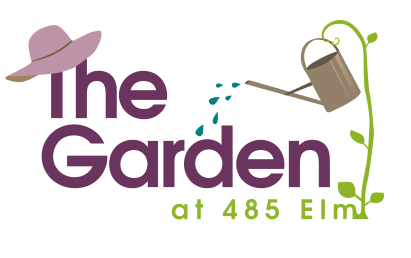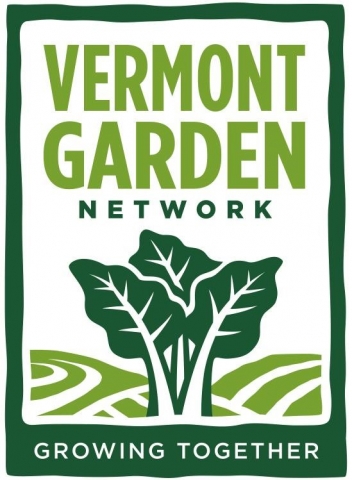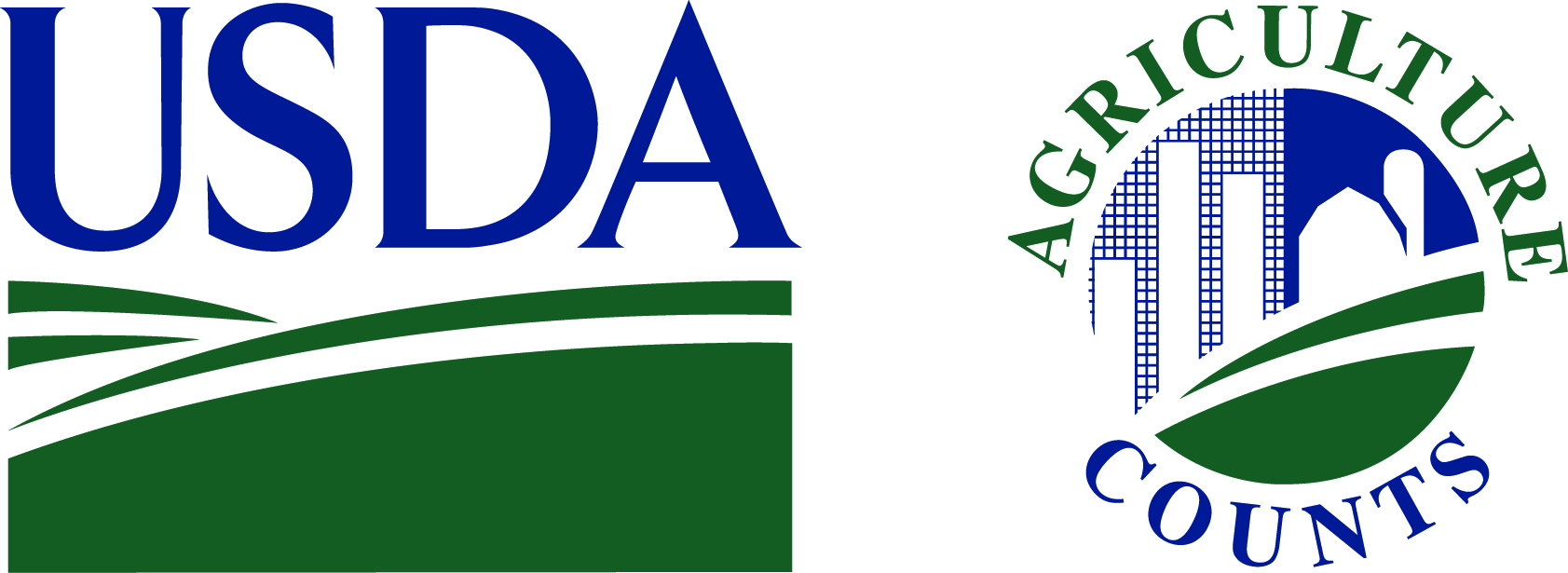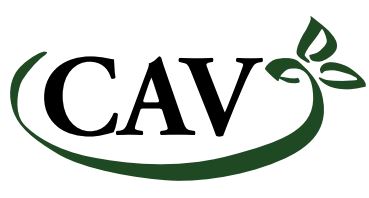Back in May, gardeners planted potatoes and onions in several (and some creative) locations. In August, it was time to harvest them.
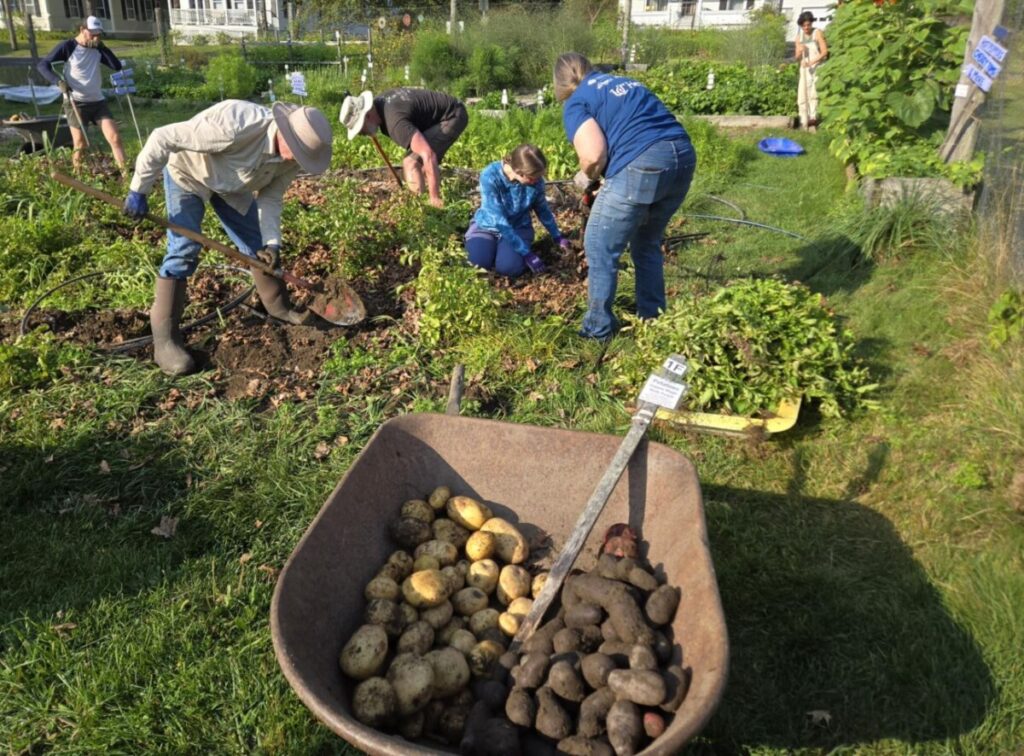
The team dug potatoes and separated them from the plants. The potatoes were separated by variety in wheelbarrows. The plants went into the garden waste windrow. To avoid literally digging (into) potatoes, gardeners placed shovels and pitchforks near each plant to loosen the soil and work the potatoes toward the surface.
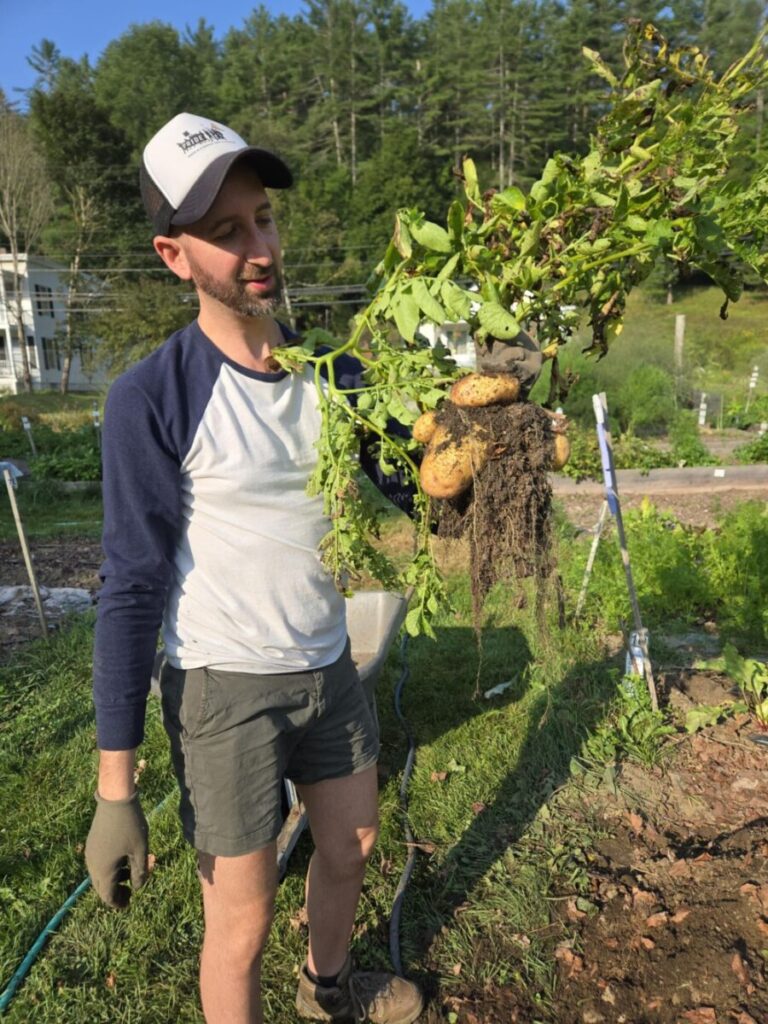
A haul of fabulous Yukon gold potatoes, every one intact.
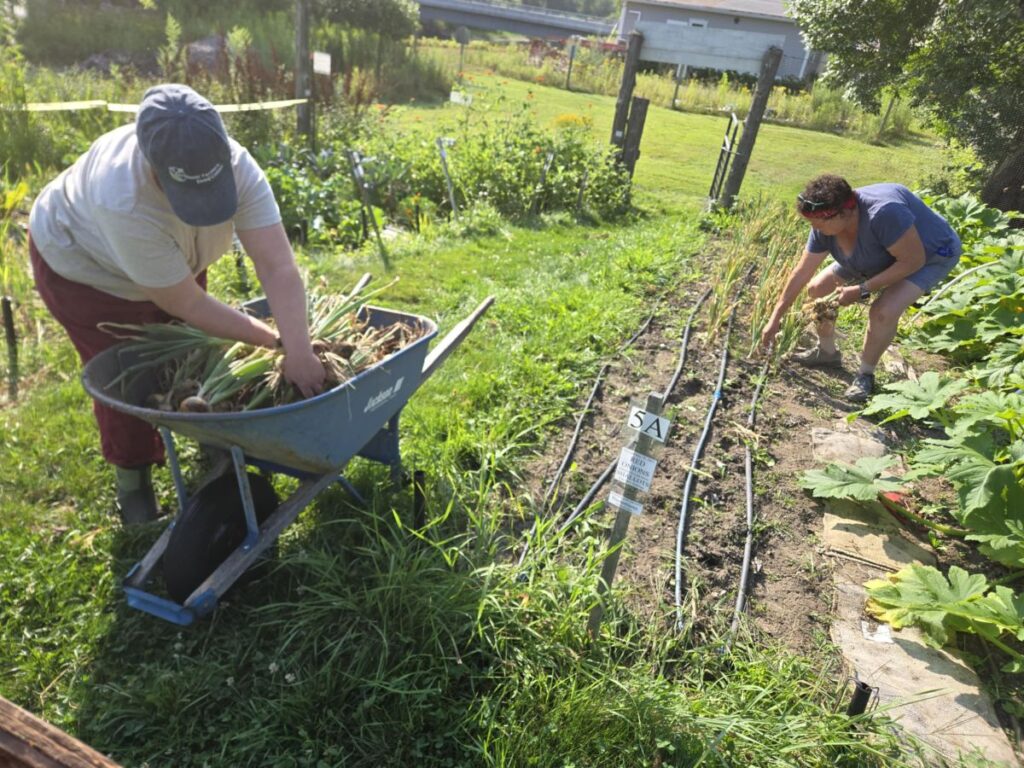
Meanwhile, gardeners pulled the red onions, yellow onions, and shallots we planted in early May.
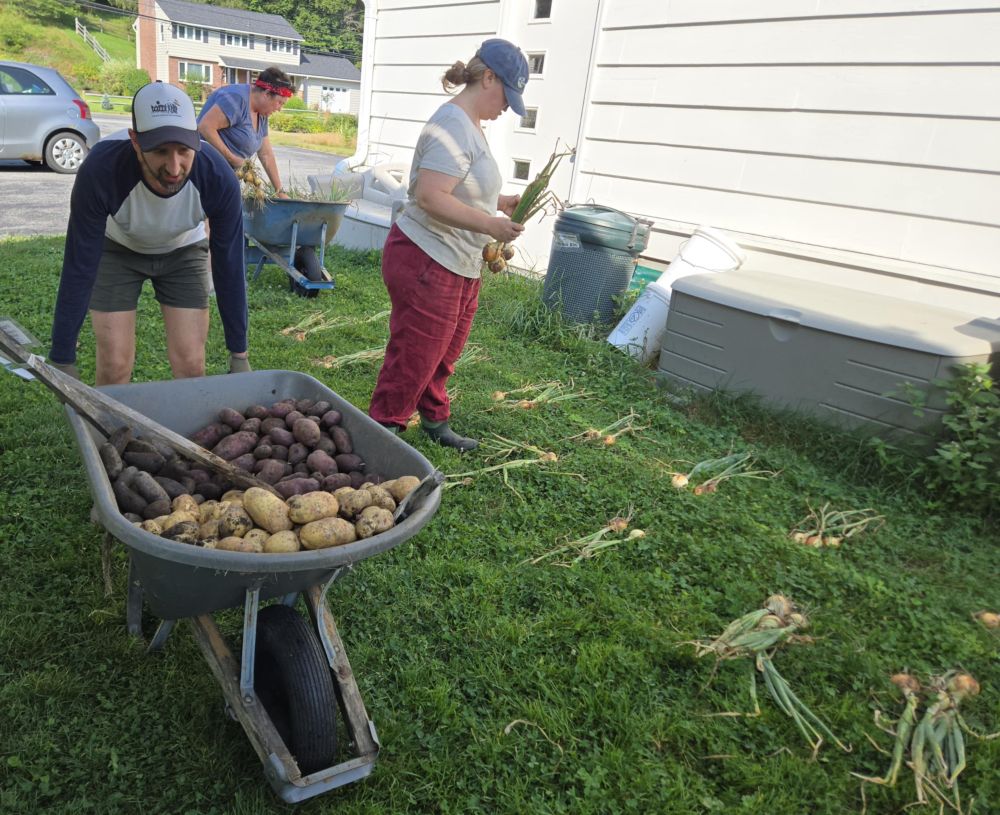
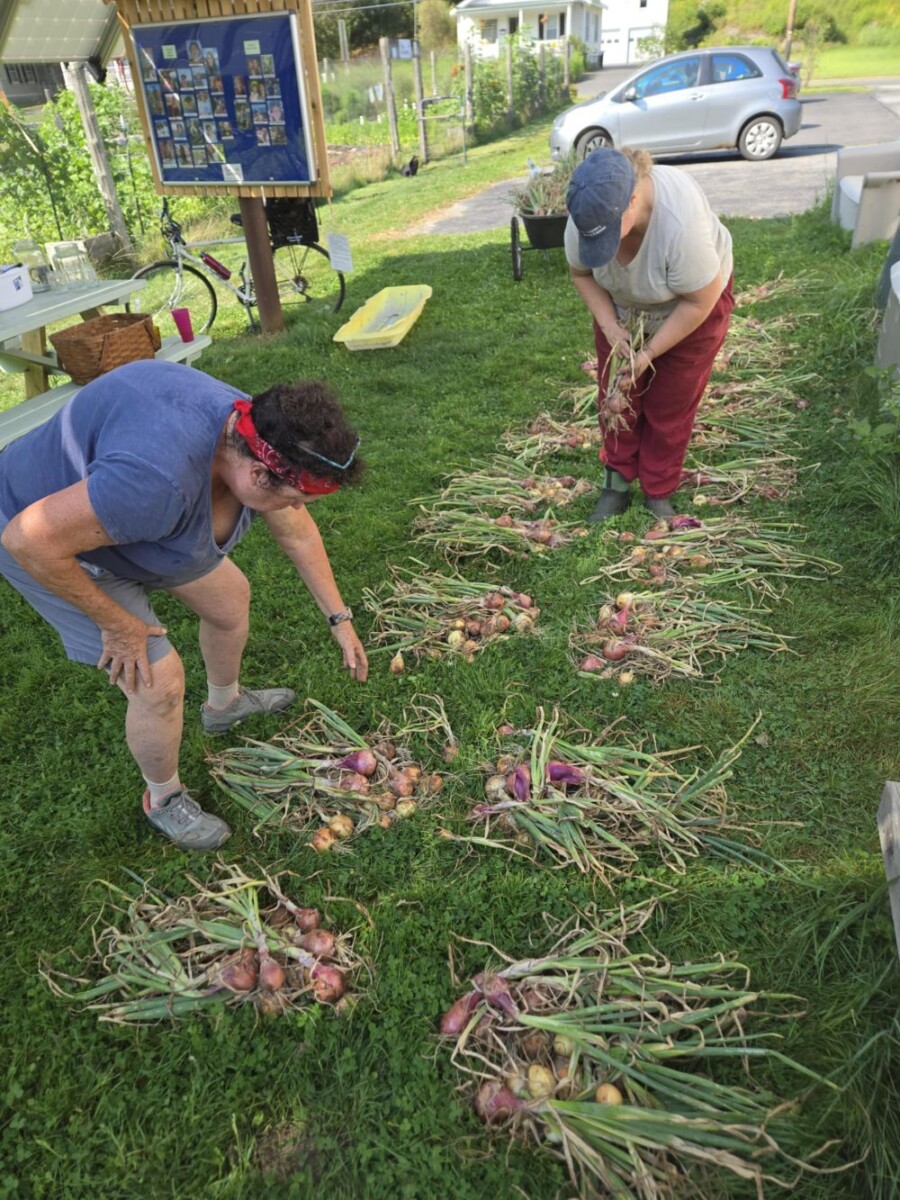
Wheeling harvested potatoes to their organizing area, just past the onion shares in progress. Twenty households are gardening together this season, so each share-divided crop is split into 20 shares.
This season’s onion shares are smaller than in other seasons. The onion seedlings came from a different grower, and now we know that “a flat of onions” is not necessarily the same number of plants from one farm to the next.
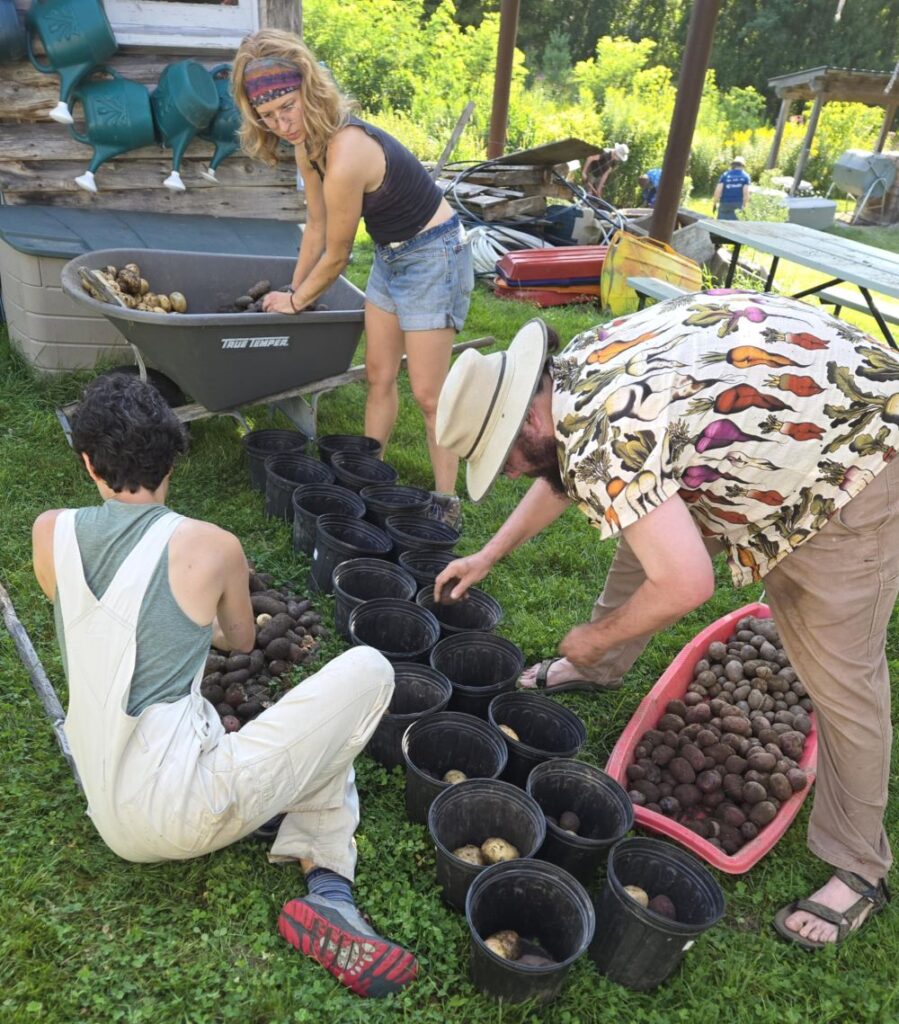
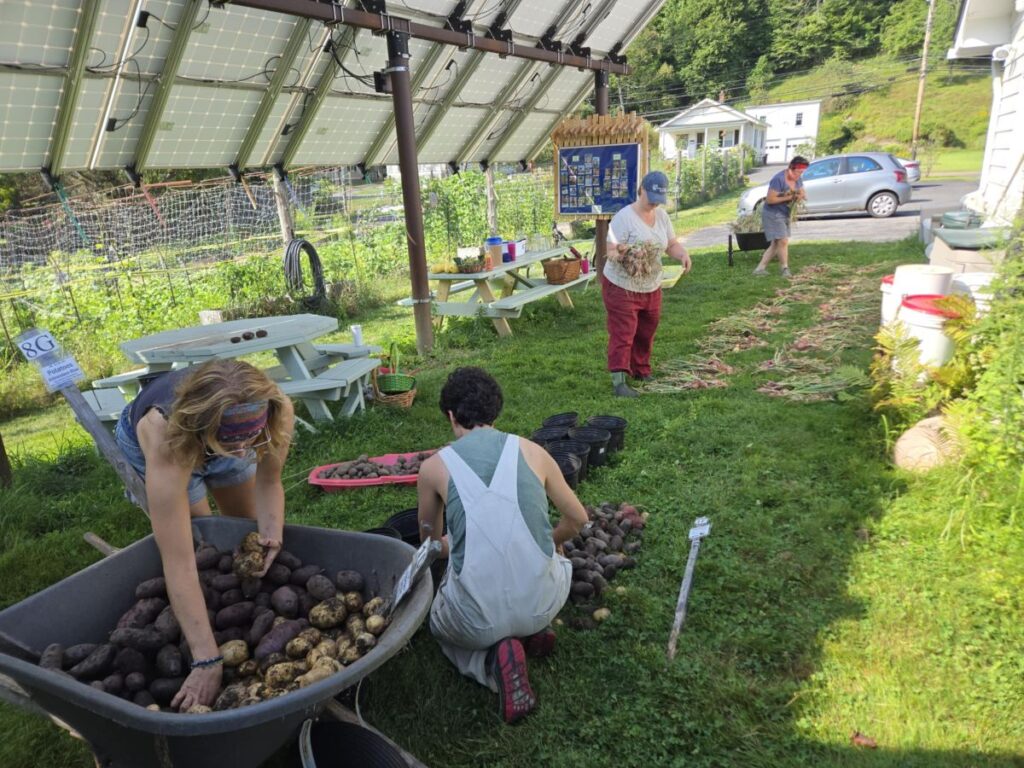
Dividing crops into shares and tracking who got theirs is an organizing project. Most crops at this garden are self-serve: salad greens, other leafy greens, herbs, beets, carrots, radishes, cucumbers, beans, peas, cherry tomatoes, chili peppers, summer squash. This season’s share-divided crops are onions, potatoes, and garlic, and later, edamame and winter squash. In other seasons, share-divided crops have included Brussels sprouts, parsnips, and peanuts.
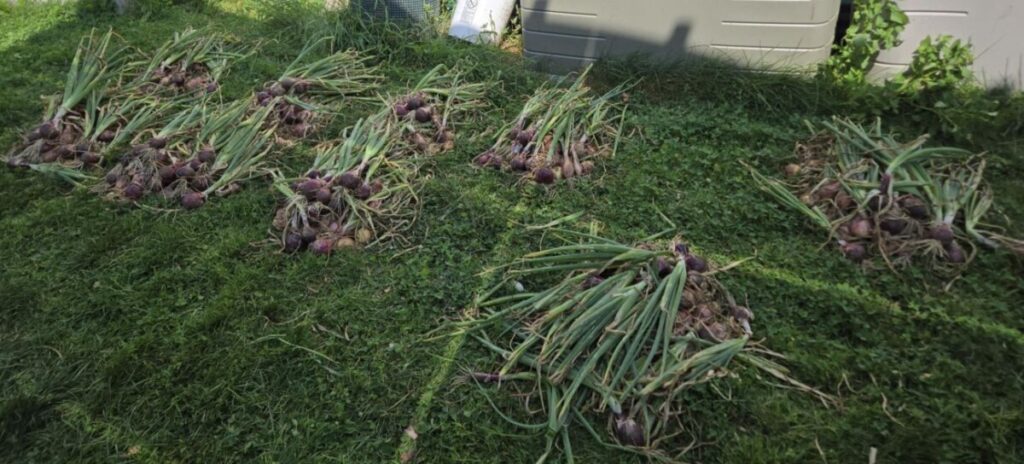
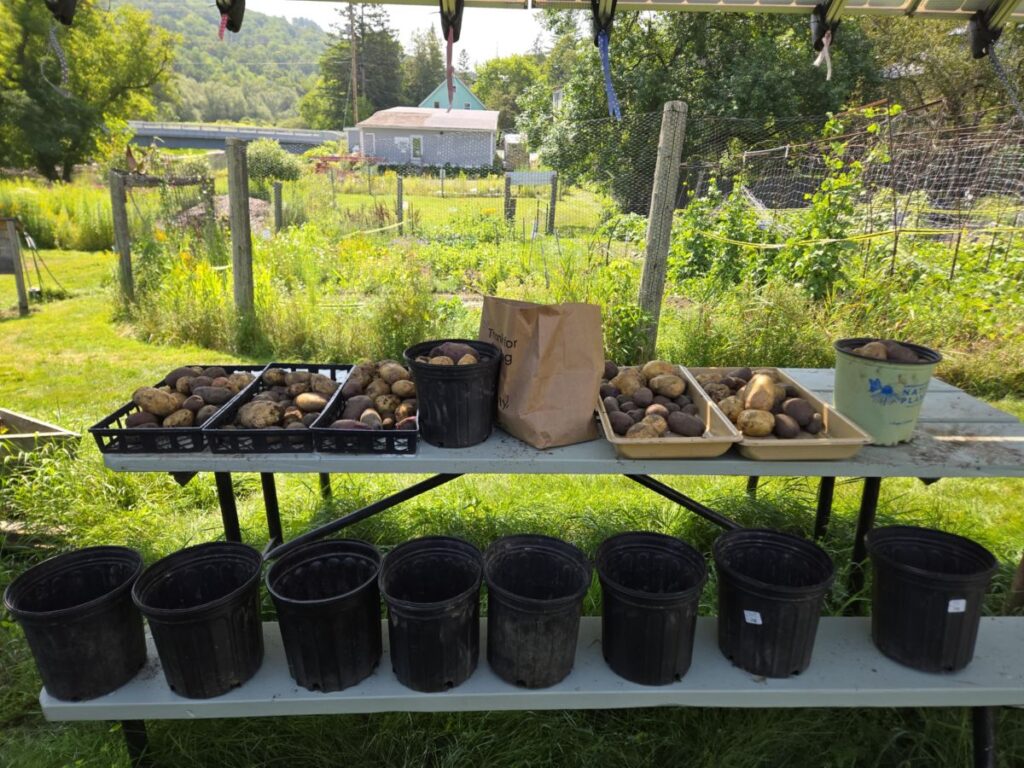
Most of the onion and potato shares went home with the day’s harvesters. The remaining shares are ready for gardeners to pick up.
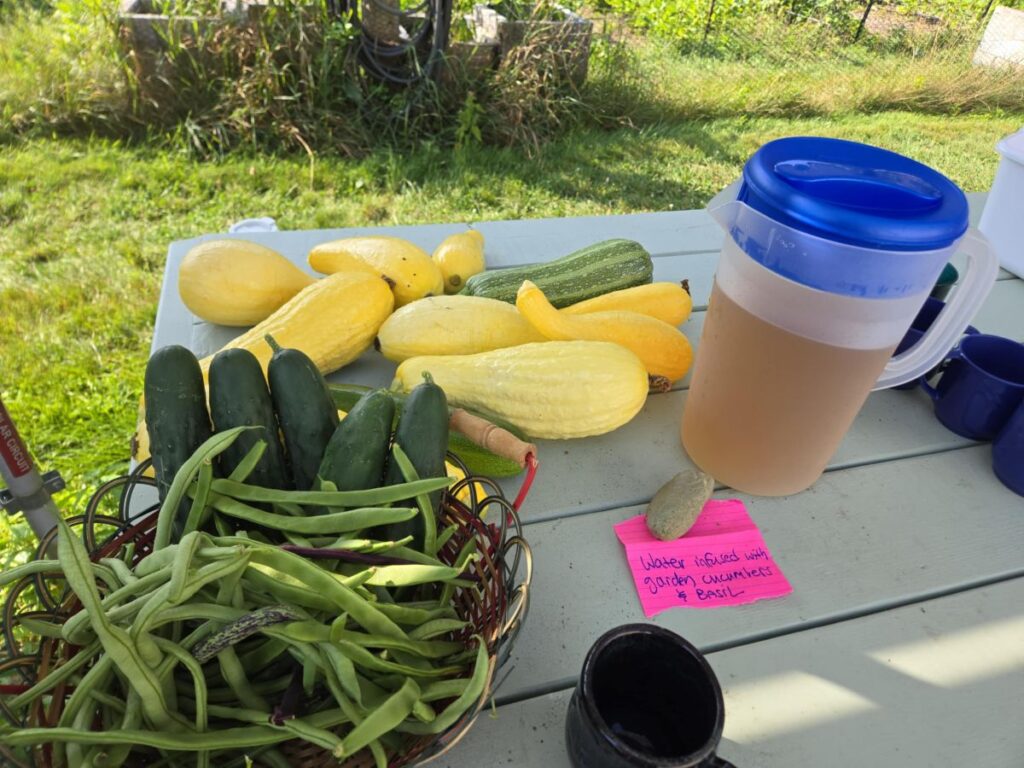
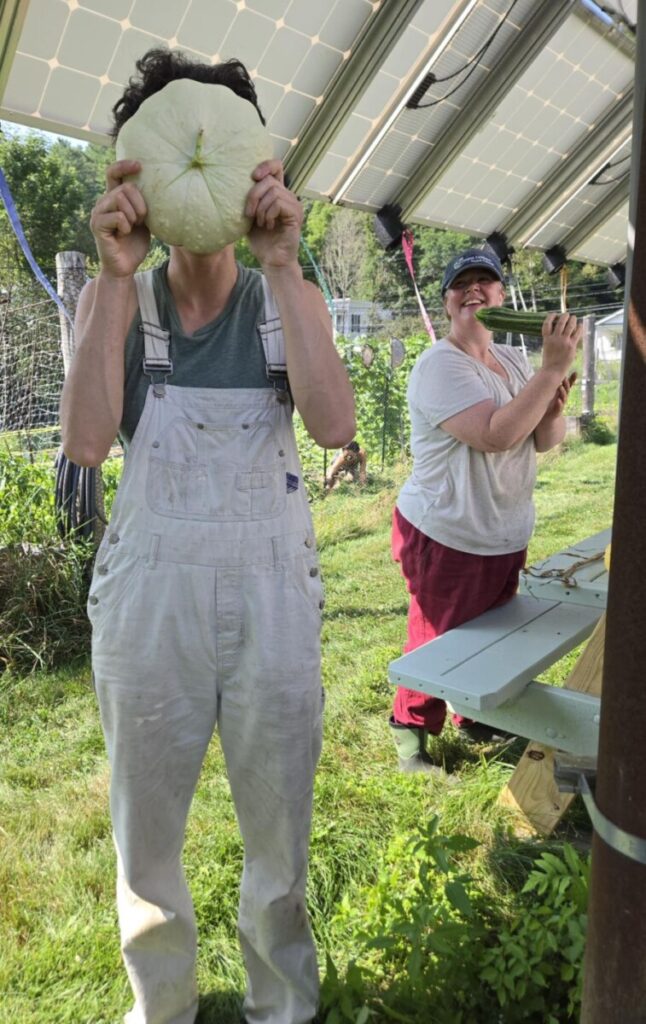
There’s always garden bounty beyond the day’s share. Along with beans, cukes, and summer squash, pitchers of chilled garden-basil-and-cucumber-infused water refresh hot gardeners. And just look at that magnificent pattypan squash.
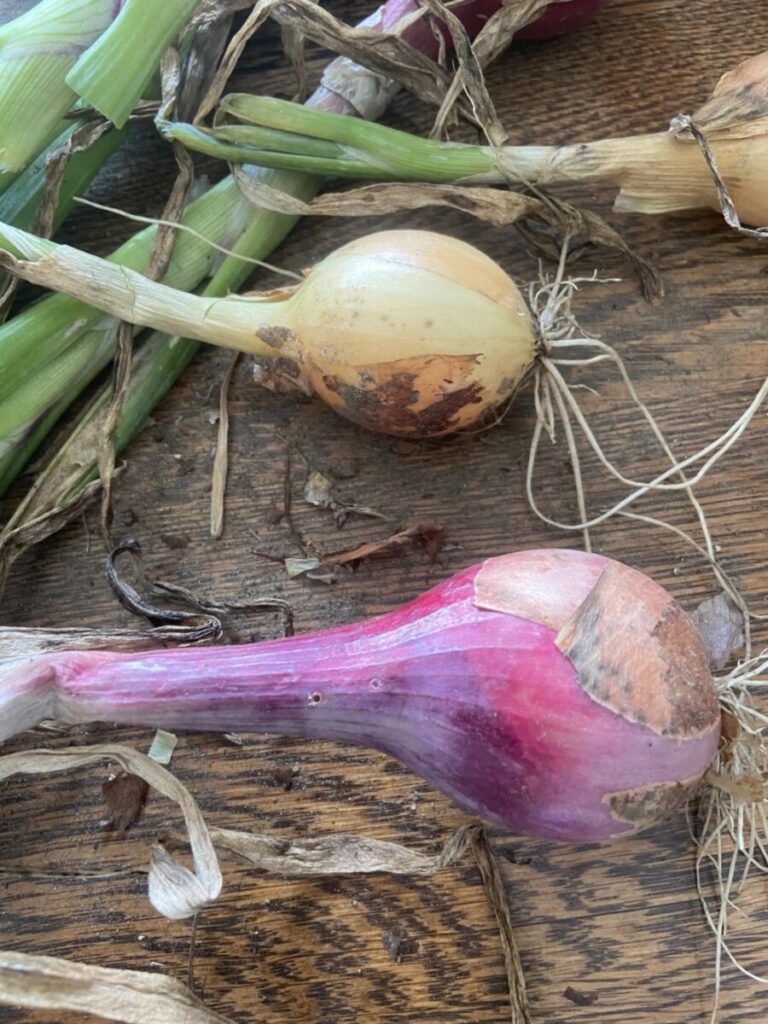
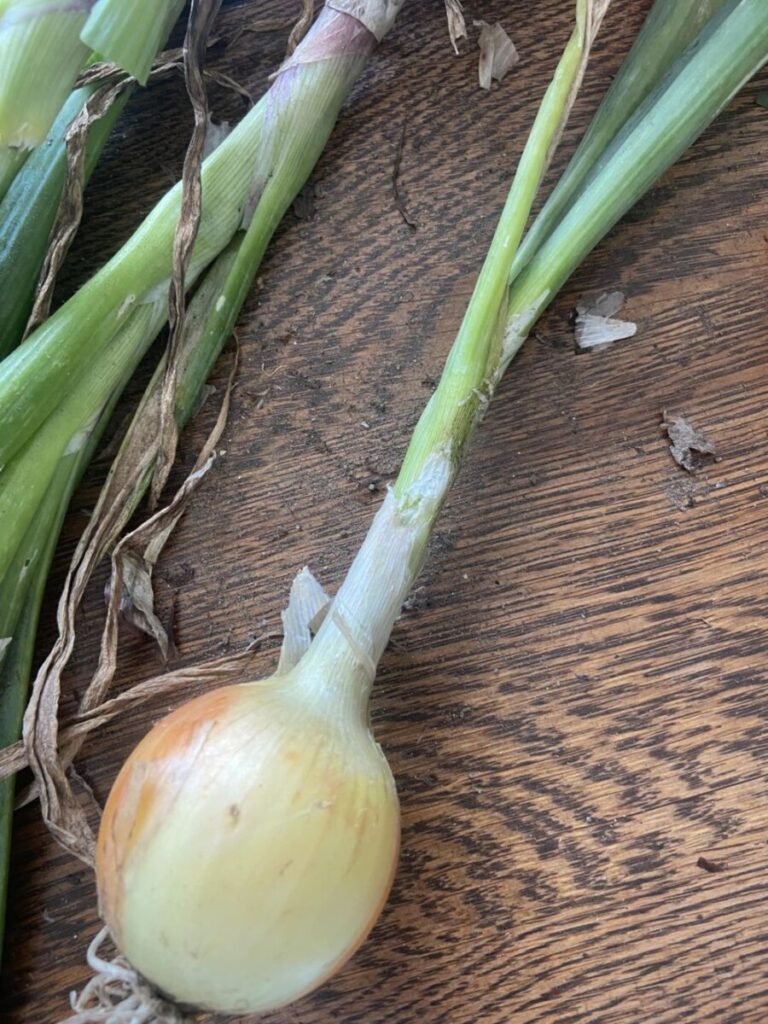
A less welcome addition to harvest day: shallots and onions with leek moth damage. Gardeners here began learning about this relatively new pest for Vermont back in 2018. Leek moths fly two or three times per season. They lay eggs in leeks, onions, garlic, and other alliums, and the larvae eat their way down the stalks toward the bulb or head of each plant. Our garlic plants show leek moth larvae damage, but not the garlic heads. However, it looks like we’ll need to harvest onions and shallots earlier each season to avoid damaged onions. There are still plenty to eat.
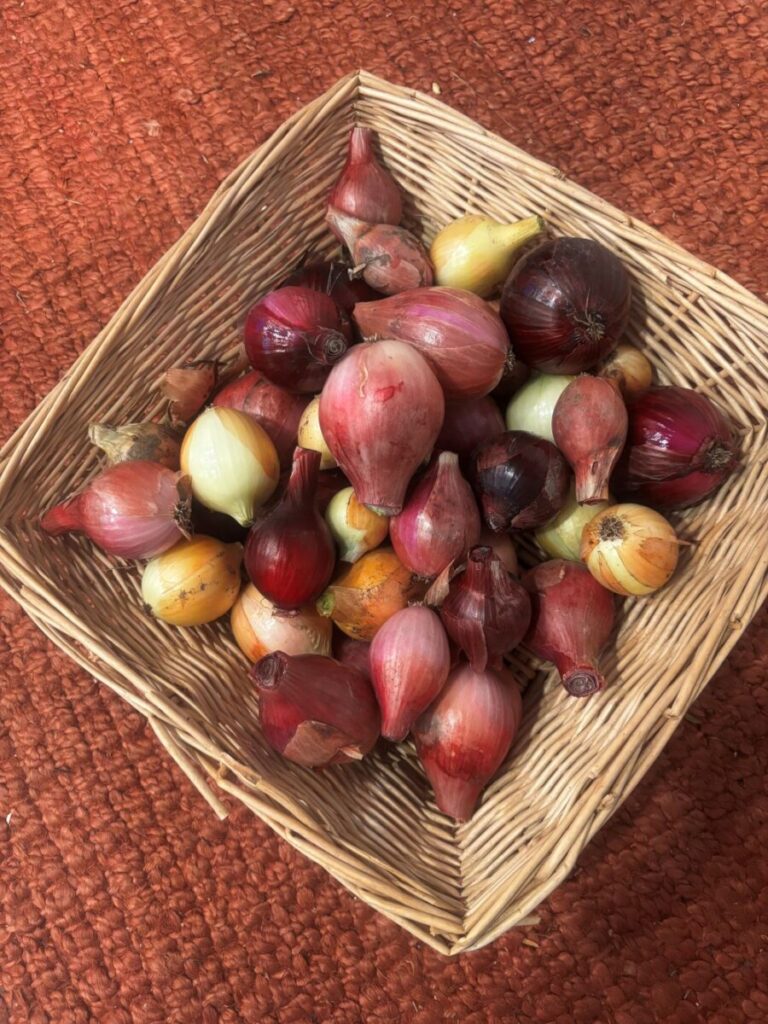
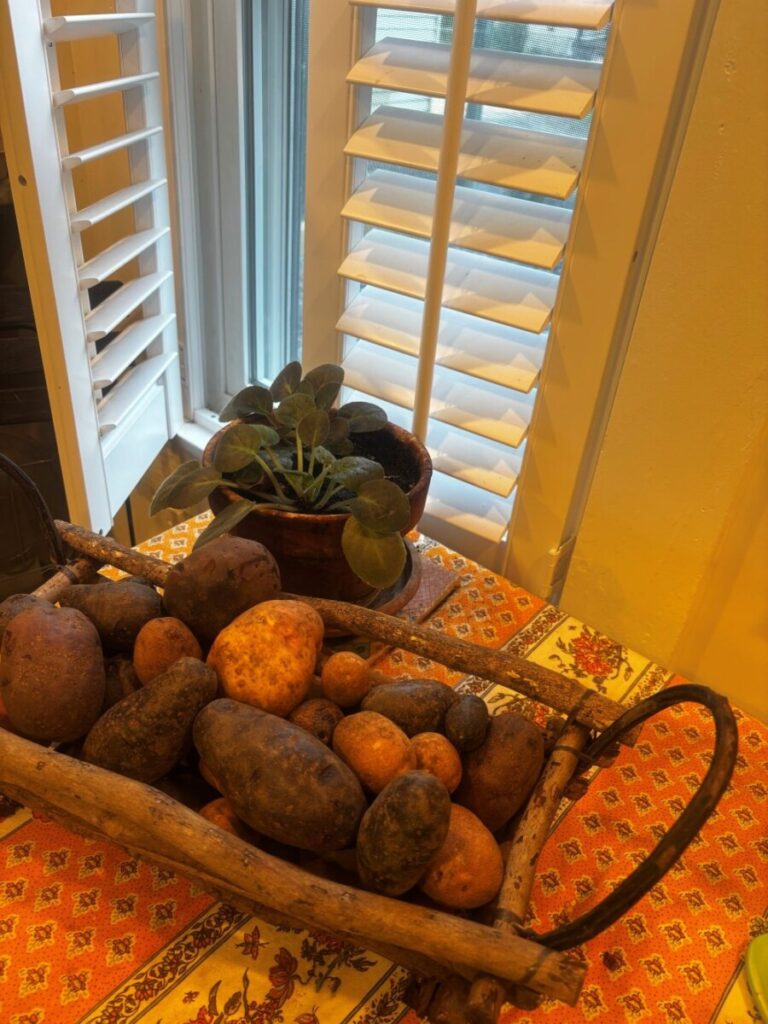
Fresh food is so beautiful. And soon, delicious.
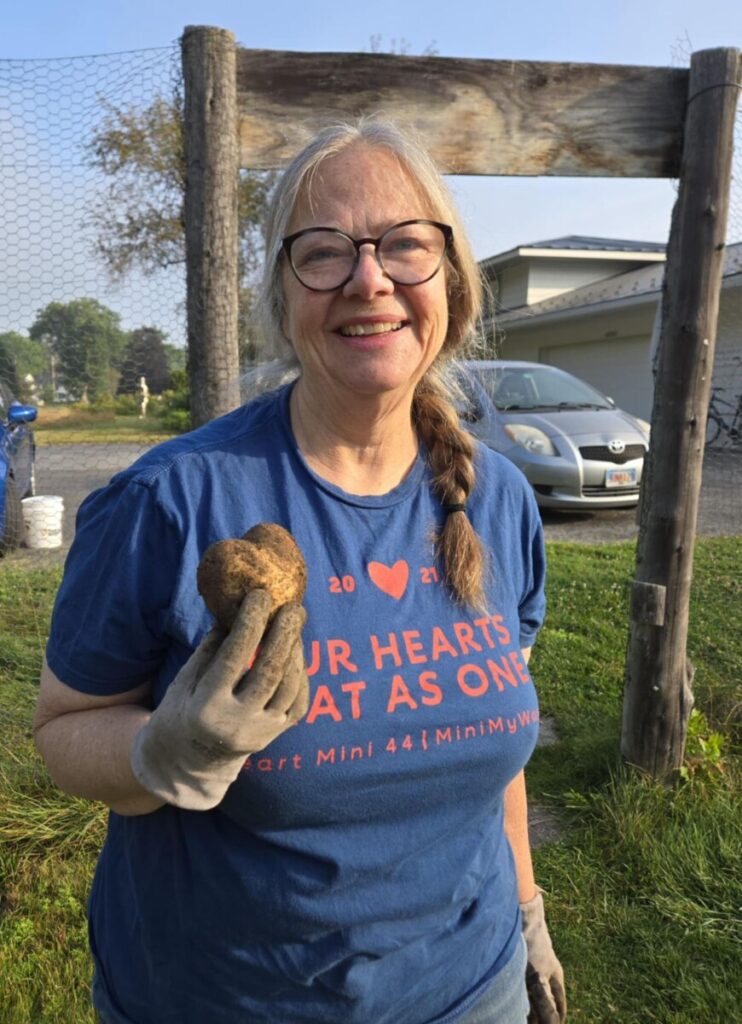
Growing food together nourishes mind, body, and heart.
